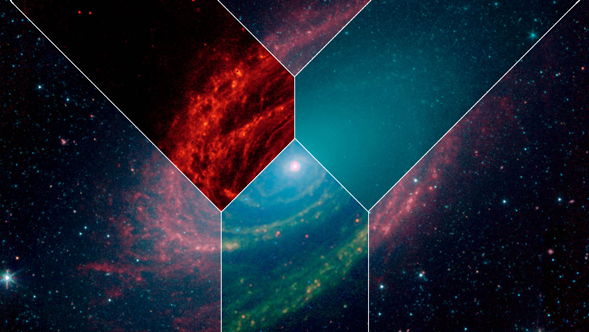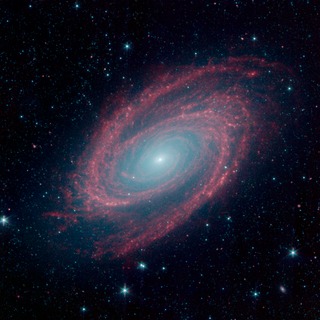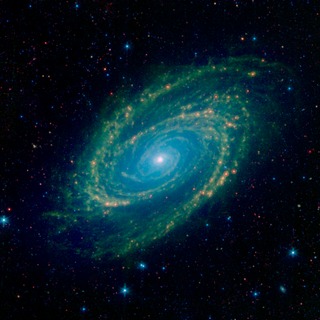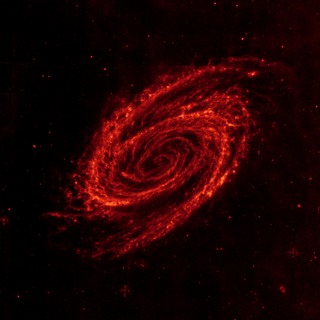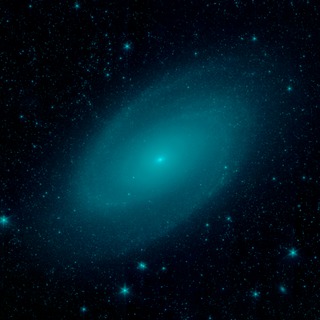
Credit: NASA/JPL-Caltech
Observation • August 27th, 2019 • ssc2019-15c
ssc2019-15c
Wispy patterns of dust trace the spiral arms of the nearby galaxy Messier 81 in this image from NASA's Spitzer Space Telescope. Located in the northern constellation of Ursa Major (which also includes the Big Dipper), this galaxy is easily visible through binoculars or a small telescope. M81 is located at a distance of 12 million light-years.
The infrared view of M81 at a wavelength of 8 microns (red) has been specially processed in this image to remove most of the glow of starlight to isolate the glow of dust.
This image reveals the distribution of dust throughout M81, from its outer spiral arms all the wan into its core. This image shows infrared light at a wavelength of 8 microns (red) that has been specially processed to remove most of the glow of starlight to better highlight the dust.
Dust in the galaxy is bathed by ultraviolet and visible light from nearby stars. Upon absorbing an ultraviolet or visible-light photon, a dust grain is heated and re-emits the energy at longer infrared wavelengths. The dust particles are composed of silicates (chemically similar to beach sand), carbonaceous grains and polycyclic aromatic hydrocarbons and trace the gas distribution in the galaxy. The well-mixed gas (which is best detected at radio wavelengths) and dust provide a reservoir of raw materials for future star formation.
Since stars have been subtracted from this image, there are a scattering of black dots in M81 that are an artifact of this process. Most of the other red dots outside of the galaxy represent the glow of dust within even more distant background galaxies.
About the Object
- Name
- M81 • Messier 81 • NGC 3031 • Bode's Galaxy • UGC 5318
- Type
- Galaxy > Type > Spiral
- Distance
- 8,500,000 Light Years
- Redshift
- 0.000113
Color Mapping
| Band | Wavelength | Telescope |
| Infrared | 8.0 µm | Spitzer IRAC |
Astrometrics
- Position (J2000)
- RA =9h 55m 33.0s
- Dec = 69° 3' 52.7"
- Field of View
- 24.0 x 24.0 arcminutes
- Orientation
- North is 30.0° right of vertical
